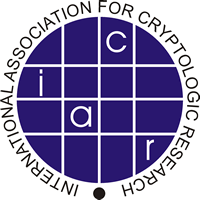here’s my newest invention, zero knowledge location privacy without snarks.
app on phone periodically checks location. if home is near, it triggers home related actions instead of uploading the location to anywhere.
now, where is the nearest patent office? /s
This paper is extremely technical (and rightfully so), but I wish there was a ELI5 or a decent explanation for us layman folks.
Very cool! I can think of so many applications for this.
Mind giving a summary for the rest of us?
I tried to answer another question which should also work as a summary: https://lemmy.world/comment/13409438
How is this better than just mapping GPS data to a hexagon and sending that to the third-party?
Imagine you want use Google Home to manage your home (questionable decision, but bare with me for a moment). Whenever you get near your house it should turn on your lights and starts up the heating so it’s nice and toasty when you get home. In order to do this you need to constantly send your GPS data to Google so they can track when you get near your home. Even if your location data is slightly obfuscated (e.g. by rounding to nearest mile or some hexagonal grid) they still get a rough estimate of your location. What this paper uses is a “thing” called SNARK. You can think of it (for this example) like a function that computes if you are near your house or not. You then execute that SNARK on your local device with your current exact GPS coordinates. The result of that operation is a signed result that is the proof if you are near your house or not, without actually telling where exactly you are. This proof can then be sent to Google without much fear of giving them any data they don’t need. The privacy aspect is especially interesting whenever you are not nearby: it will just tell Google that you are not at home, they have absolutely no idea if you are at work, or in Australia, or on the Moon or wherever else. I think the main thing they did in this paper is to define some operations on SNARKs that lets you compute proximity efficiently.
Wait, that’s a dumb design. On a (way) older phone I had some automation running and all that location triggering was done on the phone and only connected to my home when I was in fact near it. Google (or any role party) shouldn’t need to receive live geo location updates.
You then execute that SNARK on your local device with your current exact GPS coordinates
No, that’s what I’m suggesting. The proposed method in the paper makes no use of GPS, instead it’s some peer-to-peer network.
I think it is spoof-resistant from the sound of it? You giving a valid proof-of-region via one of their circuit designs provides proof of your region but does not give your exact location, from the sounds of it.
I’ll get back to you after I’ve read through it.
Yes, looks like the actual advantage (or disadvantage , depending on who you are) is ensuring that you don’t send a false location to a third party.
as per the first paragraph of the intro of the linked paper, it’s safer to store this than it is an actual location. if data gets leaked it’s like leaking a hashed password instead of a plaintext one. their example is device trackers.
You mean the hexagon? What prevents you from mapping your GPS output to a hexagon?
you have to be more specific lol
just tesselate the world with hexagons and say you’re in a specific one? that doesn’t give precise proximity but does expose your general area.
this does the opposite, doesn’t expose your general area but let’s you determine if it is close to some other location via an expensive comparison. the precision of proximity isn’t tied to how precise a location/small a hexagon you’re exposing






